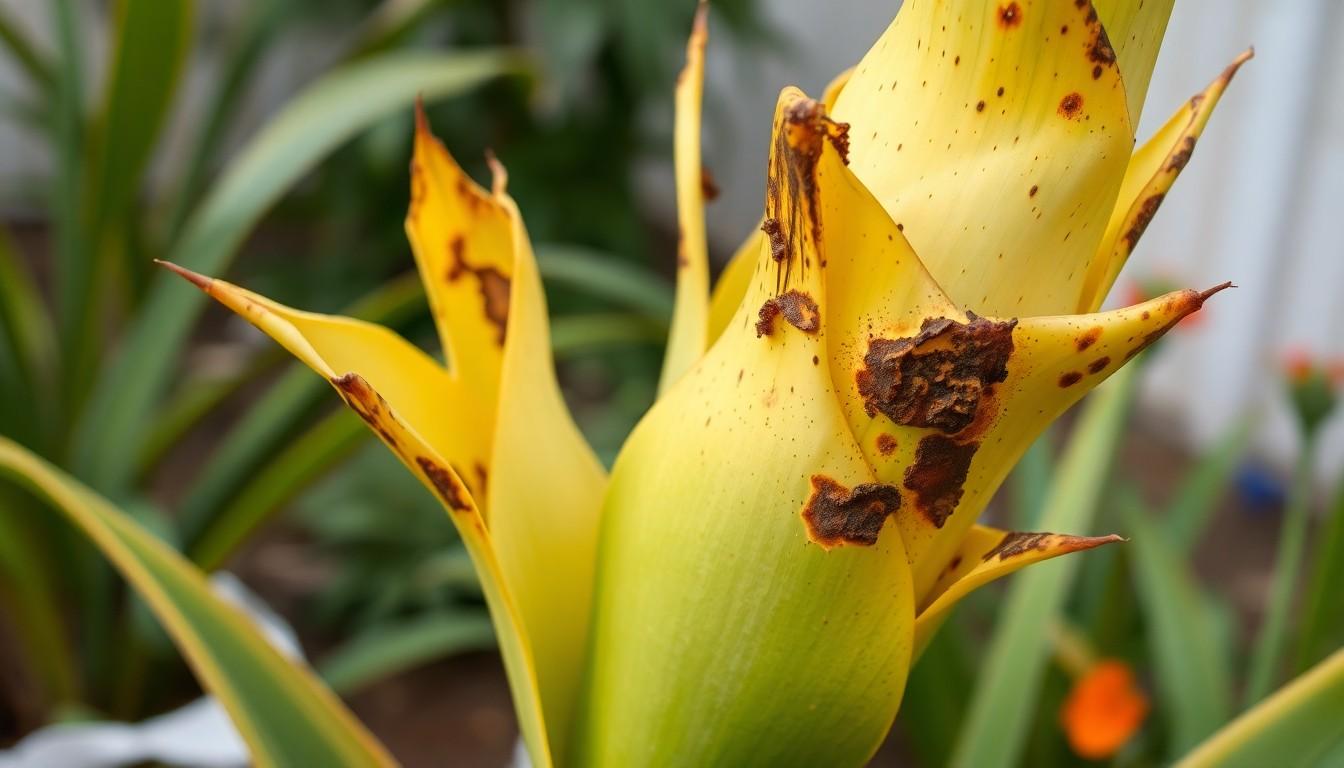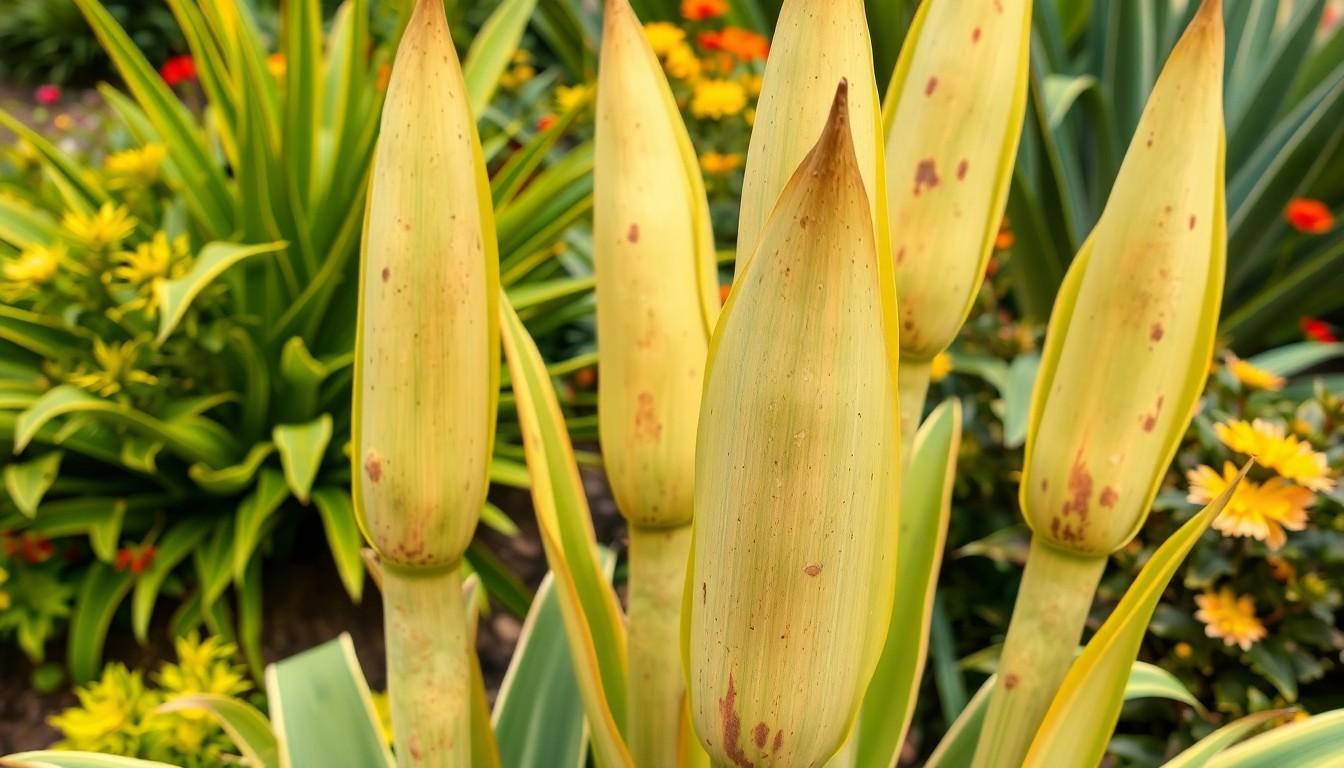Yucca plants are the life of the party in any garden, flaunting their striking leaves and vibrant blooms. But what happens when these green darlings start looking a little under the weather? Just like that friend who shows up to brunch with a questionable haircut, yucca plants can fall victim to a variety of diseases that might leave them looking less than fabulous.
Identifying these issues is crucial for keeping your yucca thriving. With the right pictures and knowledge, you’ll be able to spot the signs of distress faster than you can say “plant parent.” Dive into this guide to discover the common yucca plant diseases and their telltale images. You’ll not only save your plants but also impress your friends with your newfound botanical expertise. Who knew being a plant detective could be this much fun?
Overview of Yucca Plant Diseases
Yucca plants face several diseases that can impact their health. Fungal infections commonly affect yuccas, often leading to rotting of leaves or roots. Bacterial infections, though less common, can cause symptoms such as wilting and discoloration.
Leaf spots may appear due to pathogens that thrive in damp conditions. Root rot, a critical condition, occurs mainly from overwatering, resulting in decay. Recognizing these signs early plays a crucial role in the management of plant health.
Pests also contribute to yucca plant distress. Mealybugs can infest the plant, sucking sap and weakening it. Scale insects display similar effects, clustering on stems and leaves. These pests sometimes carry diseases that further compromise yucca vigor.
Environmental factors affect yucca health as well. Poor drainage contributes to root rot, while extreme temperatures can stress the plant. A balance of sunlight and shade aids in preventing conditions that lead to fungal issues.
Different yucca species may demonstrate varied resistance levels to these diseases. For instance, Yucca filamentosa tends to be more robust compared to Yucca gloriosa. Identifying the specific species helps in implementing suitable care strategies tailored to their needs.
Maintaining proper care is essential. Routine inspections allow for early detection of problems. Proper pruning and sanitation minimize the spread of diseases, ensuring yucca plants thrive in garden settings. With this knowledge, plant owners stay prepared to handle any yucca plant diseases that arise.
Common Diseases Affecting Yucca Plants

Yucca plants face several common diseases that can threaten their health and appearance. Recognizing these diseases early supports effective treatment and overall plant vitality.
Fungal Infections
Fungal infections often afflict yucca plants, leading to issues like leaf and root rot. Overwatering or poor drainage frequently worsens these conditions. Symptoms include yellowing leaves, mushy stems, and a foul smell from the soil. Notably, prevention emphasizes proper watering techniques and soil with good drainage. Treatment options include removing affected parts and applying appropriate fungicides. Consistent monitoring helps identify issues before they escalate.
Bacterial Infections
Bacterial infections also pose significant risks to yucca health. Symptoms such as wilting, yellowing, and brown lesions on leaves indicate a bacterial problem. Consistently wet foliage and wounds provide entry points for bacteria. To manage bacterial infections, homeowners should promptly remove infected leaves and sterilize tools. Using a preventive approach, maintaining good air circulation and proper watering practices helps minimize risks. Recognizing the critical signs ensures effective intervention for yucca plants.
Identifying Symptoms Through Pictures
Identifying diseases impacting yucca plants relies heavily on visual cues. Understanding symptoms through images provides clarity for plant owners.
Leaf Discoloration
Leaf discoloration often signals underlying issues with yucca health. Yellowing leaves frequently indicate overwatering or poor drainage. Dark brown or black spots may point to fungal infections, suggesting a need for immediate attention. Examining leaves closely through pictures exposes variations that can confirm disease presence. Pictures showing both healthy and affected foliage assist in quick identification and focus on resolving issues swiftly.
Wilting and Stunted Growth
Wilting and stunted growth appear as common signs of distress in yucca plants. Images depicting drooping leaves or reduced plant height alert owners to insufficient watering or root rot. When comparing healthy yuccas to those showing wilting, differences become stark and informative. Capturing these symptoms visually helps diagnose problems quickly. Owners can enhance care practices by recognizing patterns, minimizing damage, and ensuring robust growth through timely interventions.
Preventative Measures for Disease Control
Maintaining healthy yucca plants involves several key preventative measures. Proper watering practices directly impact plant vitality. Overwatering leads to root rot, while underwatering can cause wilting. Implementing a regular watering schedule ensures the plants receive adequate moisture without saturating the soil.
Good drainage plays a crucial role in preventing fungal infections. Yuccas thrive in well-drained soil; thus, soil amendments such as sand or perlite improve aeration. Choosing pots with drainage holes also prevents water accumulation at the bottom.
Routine inspections for pests and diseases help identify problems early. Checking the undersides of leaves for mealybugs or scale insects allows for prompt action. Removing affected leaves maintains plant health and prevents disease spread.
Pruning infected parts of yucca plants enhances air circulation. Increased airflow reduces humidity around the foliage, diminishing the risk of bacterial infections. Disposing of pruned material away from healthy plants further minimizes disease transfer.
Utilizing fungicides becomes necessary when fungal infections are present. Applying these treatments as soon as symptoms appear supports effective remediation. Following package instructions ensures proper application for optimal results.
Sanitation practices contribute significantly to disease prevention. Cleaning gardening tools with disinfectants prevents the spread of pathogens. Regularly removing debris and fallen leaves from around yuccas maintains a clean environment.
Temperature regulation also affects yucca health. Placing plants in locations with adequate sunlight but avoiding extreme heat reduces stress. Monitoring environmental conditions leads to better growth outcomes.
By adopting these preventative measures, yucca plant owners foster a healthy garden environment, significantly decreasing disease risks.
Treatment Options for Infected Yucca Plants
Identifying infected yucca plants requires timely intervention. Effective management starts with removing any affected leaves to prevent the spread of disease. Applying fungicides is essential for treating fungal infections. Select a product specifically designed for treating leaf and root rot.
Adjusting watering practices plays a crucial role in recovery. Watering should occur only when the topsoil dries, thus reducing conditions that promote rot. Using well-draining soil supports healthy root systems, which enhances overall plant resilience.
In cases of bacterial infections, thorough sanitation becomes necessary. Clean tools regularly to prevent cross-contamination, ensuring that pathogens don’t spread during treatment processes. Maintaining good air circulation around the foliage reduces moisture retention, limiting bacterial growth.
Monitoring environmental factors also contributes to effective treatment. Protect yuccas from extreme temperatures that induce stress, as healthy plants are better equipped to fight off diseases. Implementing proper fertilization strategies can fortify plants, making them more resistant to infections.
Assessing affected areas frequently helps in managing pest-related issues. Pests like mealybugs and scale insects can exacerbate plant health problems, so addressing infestations promptly is vital. Applying horticultural oils or insecticidal soaps can eliminate these pests and support yucca recovery.
Utilizing these treatment options promotes a healthier garden environment. By prioritizing plant care practices, yucca owners can ensure their plants remain vibrant and resilient against common diseases.
Conclusion
Recognizing yucca plant diseases is essential for maintaining their health and beauty. By understanding the symptoms and implementing effective care practices, plant owners can significantly improve their chances of preventing and treating common issues.
Utilizing the visual cues and images discussed allows for quick identification of problems, ensuring timely interventions. With proper attention to watering, drainage, and pest management, yucca plants can thrive in any garden setting.
By staying informed and proactive, they can enjoy the vibrant presence of yuccas while impressing friends with their plant care expertise.

